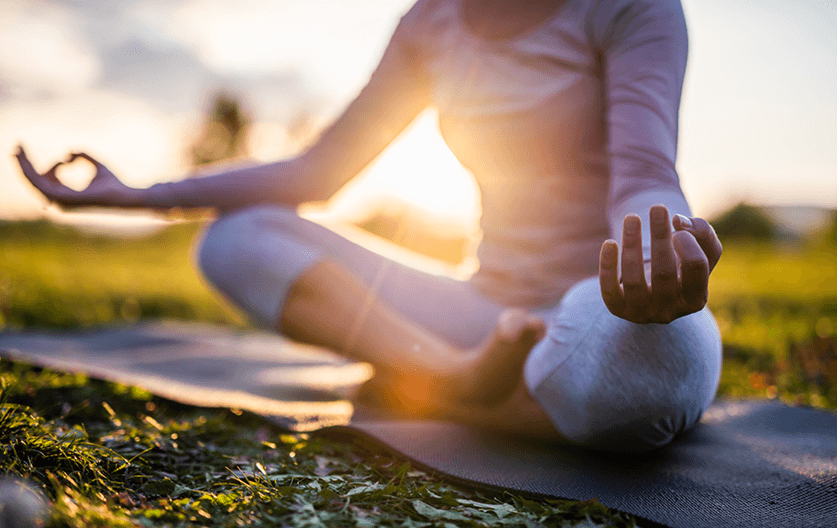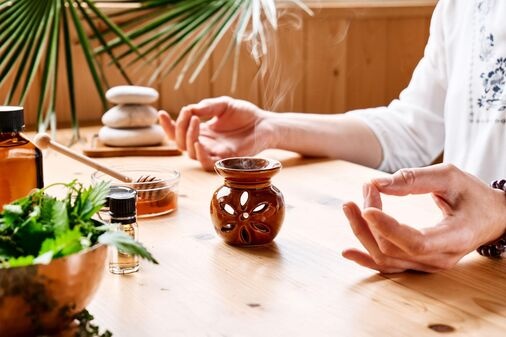What is Guided Meditation and How Does it Work?
Guided meditation, also known as mindfulness meditation, is an increasingly popular form of meditation that helps bring awareness and stillness to mind and body.
By using meditation for mindful eating from Lasta, you can use meditation techniques to develop more grounding habits around food and nourish on a deeper level. With guided meditation, a practitioner will listen to an audio guide or watch a video that leads with calm, calming narration and visuals.
The person meditating can then pause to connect inwardly with their senses before continuing on the journey that ultimately leads to being deeply conscious within oneself and one’s thoughts. The process can help you become more aware of your thoughts and feelings to foster inner peace and connection.
- Guided meditation works by utilizing various techniques such as visualization, mindfulness, and deep breathing to help an individual focus their attention and achieve a state of deep relaxation and mental calm. The guidance provided by a teacher, therapist, or pre-recorded meditation can help an individual to stay focused and centered during the meditation practice.
During guided meditation, an individual is usually instructed to sit or lie comfortably and focus on their breath or a specific visualization or mantra. As the individual focuses on their breath or the guidance provided, they may notice a reduction in their heart rate and muscle tension, leading to a sense of relaxation and calm.
As the individual continues to focus on the guidance provided, they may also notice an improvement in their overall mental clarity and ability to focus. This can be beneficial for individuals experiencing stress, anxiety, or difficulty sleeping.
Overall, guided meditation can be a powerful tool for promoting relaxation, reducing stress, and improving mental clarity.
How Guided Meditation Can Help With Stress Relief & Mental Clarity
Guided meditation can help with stress relief and mental clarity by allowing individuals to focus their attention and eliminate the thoughts that may be crowding their minds.
This can lead to a reduction in mental and physical stress and an increased sense of relaxation and well-being.
Additionally, guided meditation can help improve focus, concentration, mental clarity, and decision-making abilities.
Guided meditation can be done in many ways, such as listening to a recorded meditation, attending a meditation class, or working with a therapist or coach to create a personalized meditation practice.
Physical Benefits of Practicing Guided Meditation Regularly
Practicing guided meditation regularly can have several physical benefits, including:
1. Reduced blood pressure:
Research has shown that regular meditation can lower blood pressure, decreasing the risk of heart disease and stroke.
2. Improved immune function:
Regular meditation has been shown to boost the activity of natural killer cells, which help to fight off viruses and other infections.
3. Decreased chronic pain:
Guided meditation can help to decrease chronic pain by reducing inflammation and muscle tension.
4. Improved respiratory function:
Guided meditation that includes deep breathing exercises can help to improve respiratory function and increase lung capacity.
5. Improved sleep:
Guided meditation can help to promote relaxation and reduce stress and anxiety, leading to improved sleep quality.
6. Decrease Inflammation:
Guided meditation can help to decrease inflammation in the body, which is associated with many chronic illnesses such as cancer, heart disease, and diabetes.
7. Reduced symptoms of anxiety and depression:
Guided meditation can help to reduce symptoms of anxiety and depression by decreasing the activity of the stress response and increasing the movement of the relaxation response.
It’s worth noting that these benefits are not guaranteed, and the results may vary based on the person and the type of meditation. Therefore, it’s essential to consult with a professional before starting a new meditation practice if you have any concerns.
Guided Meditations to Enhance Your Sleep Quality & Reduce Insomnia
Here are a few guided meditations that can help to enhance your sleep quality and reduce insomnia:
1. Body scan meditation
This meditation involves lying down and focusing on different body parts, starting from the top of your head and working your way down. As you focus on each part of your body, you can release tension and fully relax.
2. Progressive muscle relaxation
This meditation involves tensing and then relaxing different muscle groups throughout your body. You can release tension and relax as you pull and relax each muscle group.
3. Breath awareness meditation
This meditation involves focusing your attention on your breath and becoming aware of the sensation of the breath as it enters and exits your body. As you focus on your breath, you can release tension and fully relax.
4. Guided imagery
This type of meditation involves creating a mental image of a peaceful place, such as a beach or forest. As you focus on this image, you can release tension and fully relax.
5. Yoga Nidra
Yoga Nidra is a form of guided meditation that is often used for sleep and insomnia. It’s a practice of deep relaxation, which brings the body into a state of stillness and calm.
How to Create the Perfect Environment For a Guided Meditation Session
Creating the optimal environment for a guided meditation session can be essential to ensuring the success of the experience. Most importantly, ensure that you create a quiet and comfortable space where practitioners can relax and feel at ease.
To ensure people feel safe and secure, turn off cell phones or other devices that might interrupt their concentration. Dimmed lights and soft music (or no sound at all!) can also add to the calming atmosphere of a guided meditation session.
Here are 7 tips to help create the perfect environment for a guided meditation session:
1. Choose a quiet, comfortable space
Finding a space where you can be undisturbed during your meditation session is crucial. This could be a room in your home or a quiet outdoor space. Make sure that the area is comfortable and conducive to relaxation.
2. Set the temperature
The room should be calm and well-ventilated. A comfortable temperature will help you to relax and feel at ease.
3. Dim the lights
Low lighting can create a relaxing and meditative atmosphere. You can use candles, lamps, or dimmer switches to adjust the lighting in your room.
4. Play calming music or nature sounds
Calming music or nature sounds, such as the sound of ocean waves or birds, can create a peaceful atmosphere, which enhances the meditation experience.
5. Use comfortable clothing and cushions
Make sure you wear comfortable clothing and are seated on a comfortable cushion or mat. This will help you maintain a relaxed posture throughout your meditation session.
6. Have a schedule
Try to meditate simultaneously daily and make it a part of your daily routine. This will help to create a sense of consistency and discipline.
7. Remove distractions
Turn off your phone and any other electronic devices, and ensure you will not be interrupted by anyone. This will help you to stay focused on your meditation practice.
Conclusion
Guided meditation continues to be an effective solution for improving physical and mental health and overall well-being.
With practice and dedication, guided meditation can become an integral part of daily life that works wonders in improving overall wellness and well-being.








Leave a Reply
You must be logged in to post a comment.